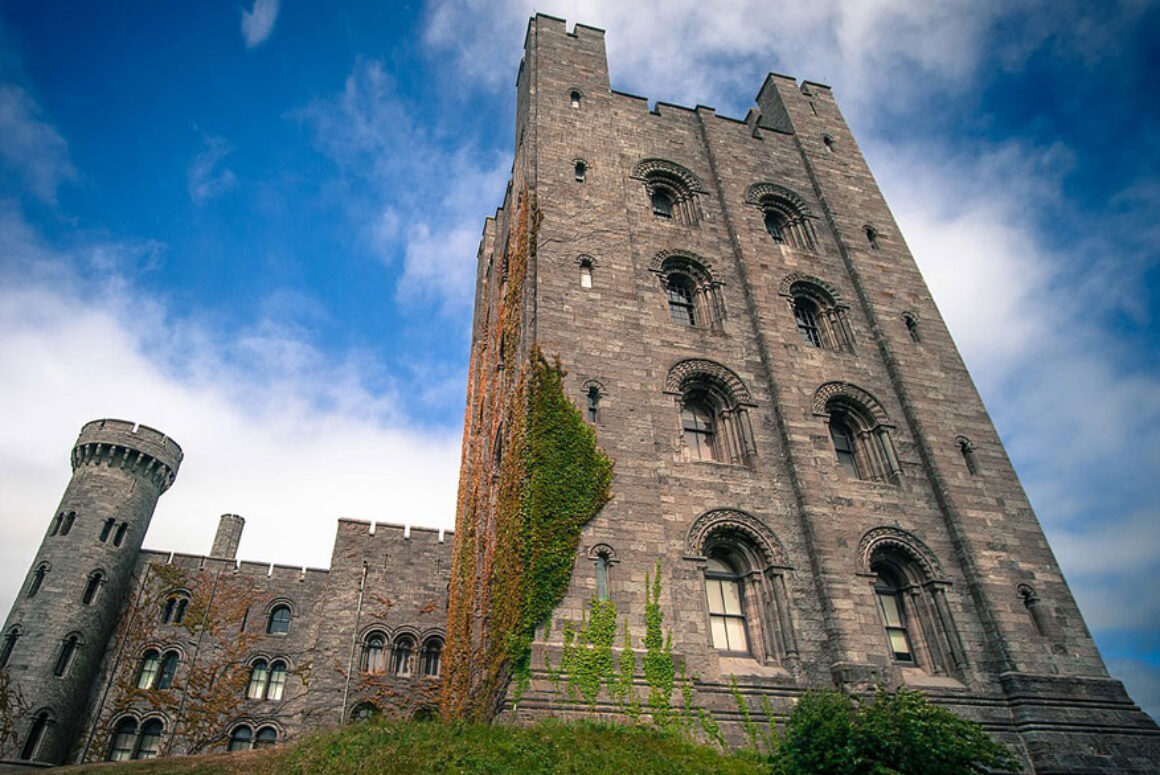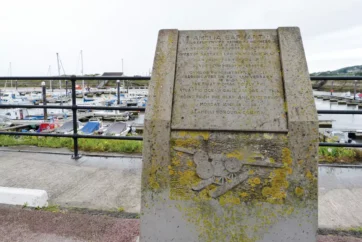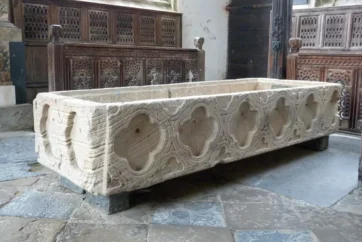![]()
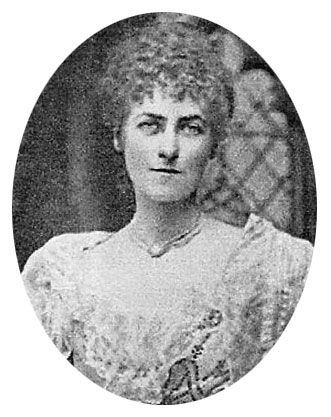 Capel Curig sits on the A5, the road from London to Holyhead, and is one of the gateways to Snowdonia, a place loved by walkers and climbers. Typically, we were not there for the mountains and the rocks; it was St Julitta’s Church and its fascinating graveyard that drew us there, to find Lady Alice Douglas Pennant.
Capel Curig sits on the A5, the road from London to Holyhead, and is one of the gateways to Snowdonia, a place loved by walkers and climbers. Typically, we were not there for the mountains and the rocks; it was St Julitta’s Church and its fascinating graveyard that drew us there, to find Lady Alice Douglas Pennant.
At the crossroads take the A4086 and, as the road bends across the river, pull in on the left to the church. It is a peaceful place, the smallest church in Snowdonia. There was a memorial service for her In Knightsbridge (naturally) but Alice was buried here, towards the back of the graveyard on the left, for this was a place she loved, a place full of memories of happy holidays.
For some, her story is particularly moving, for it hints at the sadness of unfulfilled love, because of some words scratched on the window of her bedroom. It is said that Alice fell in love with a gardener in 1880 and was banished to the castle tower by her father as a punishment. She scratched her love on a window pane, and that message is still visible.
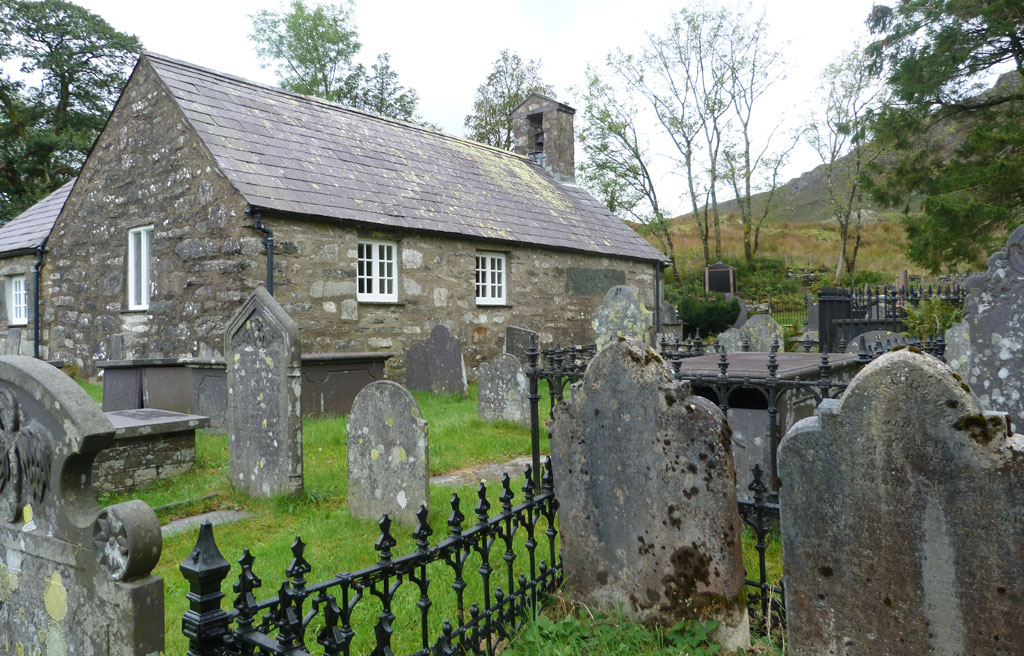
Lady Alice was born in Chesham Place in London in 1862, the daughter of George Sholton Gordon, the 2nd Baron Penrhyn of Llandegai. She was one of fifteen children brought up in Penrhyn, the neo-Norman castle in Bangor, between Snowdonia and Menai Strait. The extreme wealth of the Pennant family came from the sugar trade and their huge plantations in Jamaica which were worked by enslaved people. The family were vociferous opponents of the abolition of slavery and they carried similar attitudes into their business in Wales. They developed the huge Penrhyn slate quarry at Bethesda, which at the time was the largest in the world. Lord Penrhyn opposed both the unionisation of the workforce and any improvement in their working conditions. He once told the workers that inhaling slate dust was good for them, despite high mortality rates.
There were bitter and lengthy strikes. One in 1896 lasted for eleven months and the other which began in 1900 lasted for three years, the longest industrial dispute in British history, bringing poverty to the people and desolation to Bethesda. Lady Alice Douglas Pennant’s life, in contrast, was one of privilege and luxury.
Penrhyn Castle, built between 1822 and 1837 and incorporating parts of a medieval structure, still retains the extravagance which is so far removed from the working lives in both Jamaica and Bethesda that paid both for the building and the fine collection of art it contained. It included work by Canaletto, Gainsborough, Rembrandt and Richard Wilson and Alice later painstakingly catalogued it all.
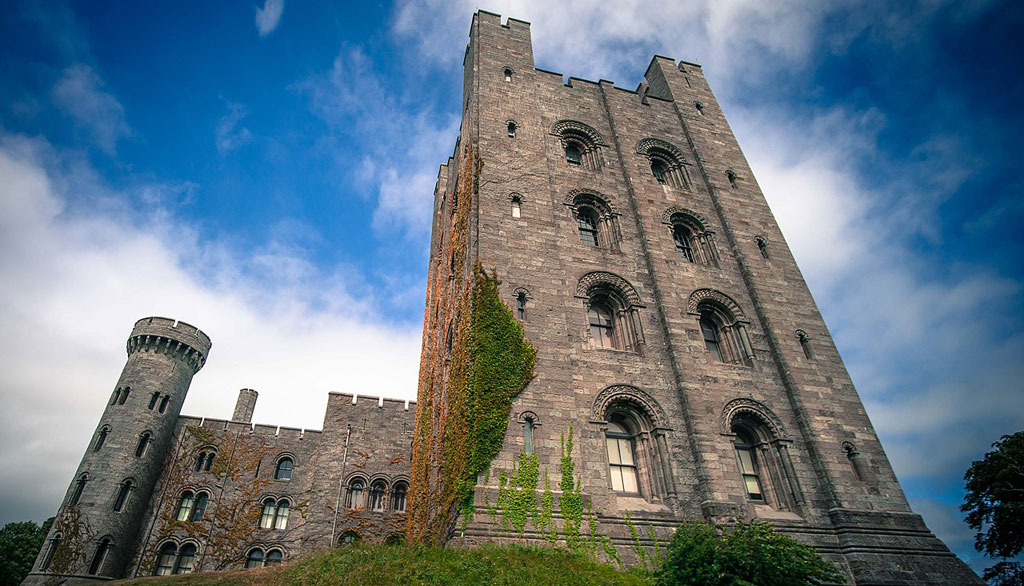
But it is unexpected graffiti that is her most lasting legacy. For many years those scratched words on the glass were believed to be in poor Latin – essere amato amando. In fact, it is Italian which translates as to be loved, whilst loving. The teenaged Alice is in the frame, so to speak, because she had previously scratched her name on a different rain- shrouded window above the gardens.
Once Alice had been presented to Queen Victoria at Buckingham Palace in February 1880 – her clothes described in detail in the press, along with her splendid hat ‘featuring a plume of white ostrich feathers and a veil’ – she assumed the lifestyle of a conventional aristocrat, devoted to good works, with strong conservative values. Of course, she had all the accomplishments of her class. She painted attractive watercolours, she played the piano and performed recitations. She appeared on stage in an amateur theatrical performance at the Chester Music Hall in October 1900 to raise money for Lady Lansdowne’s Fund for the Officers Branch of the Soldiers and Sailors Family Association. In 1905 she sang at her own fun- raising concerts in Penrhyn Castle to raise money for the Imperial Yeomanry Hospital.
Alice was always at meetings and committees. She opened fetes and bazaars, in aid of the Aberdaron Church restoration fund, for example, and the Bangor Railways institute’s annual horticultural show. She was President of both the Caernarfon Welsh Industries Association, and the Caernarfon Needlework Association. She was invited to present attendance awards at the Glanogwen Girls’ School in Bethesda in 1899 as well as the prizes at the Bethesda Cycle Races in the same year. She helped at the Christmas Tree Tea Party at the Conwy Workhouse in 1895 at which ‘juveniles were given oranges.’
She vehemently opposed the Welsh Church Act of 1914 which separated the Church in Wales from the Church of England, which Conservatives like Alice saw as a Liberal, non-conformist plot led by Lloyd George. As it says on her memorial in Capel Curig, ‘She faithfully defended the ancient church in Wales.’
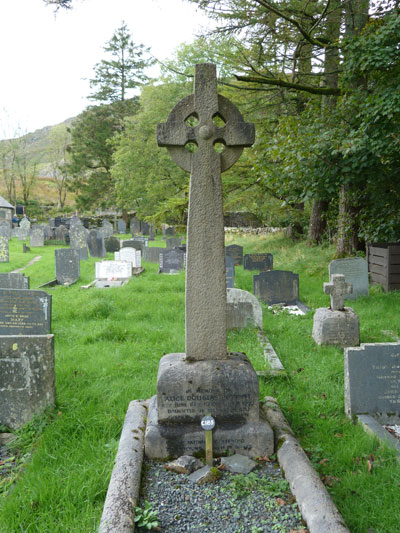
Alice became a devoted contributor to the war effort, helping to publicise the government’s official pattern for the making of knitted belts for the troops. In a letter to the press she writes, ‘Many women are wishing to set to work at once’ to make them and then qualifies it to suggest that others might ‘ employ and pay women in need of work in making them.’ In 1916 Alice wrote to the North Wales Chronicle urging the collection of sphagnum moss for use as a surgical dressing. She also promoted the idea of Camp libraries, sending books to the front for the troops, feeling that Wales was not pulling its weight in donations and saying ‘In many a home there is now a shelf or cup- board of story-books belonging to the boy who will never come home again; to what better use can they be put than to send them to help and cheer those who are following his glorious example?’ which, try as I might, I cannot see as anything other than a little insensitive.
She was happy to report in 1919 that ‘the Queen has graciously accepted the first length of hand-woven tweed made (not in Scotland) by a disabled soldier. It is a thick white material made at the Cambrian Factory, Llanwrtyd Wells, at the Training Centre for Disabled Soldiers as hand-loom weavers.’ She went on, ‘One hopes that many disabled men may find happy employment as hand-loom weavers. There is no reason why a man unable to work regular hours or endure indoor life should not have his loom ,set up close by his home in a half-open hut such as are now often used for open-air cures. I remember once in Italy seeing a silk weaver’s loom set up in a nice little shed looking on to his pretty garden.’ Well, if you must insist on being poor or disabled, at least you can do your best to look picturesque.
Her photograph shows an attractive, if austere woman, well dressed and prosperous, an unnaturally thin waist, drawn in presumably by a vicious corset, her hair dressed carefully in curls. She was clearly a society lady, at home in fashionable London and in grand houses, but it is that unexpected graffiti that has come to define her.
Was she a girl briefly forgetting her place in the world and so her Victorian father reminded her forcibly of her role and her duty? This might have given her the opportunity to play the part of the forlorn renaissance lover, trapped in a tower by a cruel father, losing herself in an imagined Pre-Raphaelite painting, enjoying all that delicious agony of a bored, frustrated teenager, watching her crush in the garden, imagined for a moment as a medieval knight.
What do I think? There is no suggestion of any romantic involvement in her subsequent life, no engagement and she was an eligible aristocratic lady, certainly a ‘good match,’ always a noted guest at balls and at the weddings of others. She was of marriageable age long before the pool of possible husbands was horribly decimated in the First World War. But it didn’t happen and it could have done. There could be many reasons for that, which might be more convincing than doomed love. Perhaps we have turned it into a romantic tragedy to suit our own needs.
It was, of course, a privileged life, mapped out for the inquisitive in the Tatler magazine. Alice travelled for example to India in 1924 as a guest of Lady Rawlinson. Her final trip abroad was in March 1937 when she returned from a trip to the Holy Land and she last appears in the press later in October as a mourner at the funeral of the former Dean of York. After this she disappears completely from public view. She died in a London nursing home in March 1939, after a long illness. She was 76. In her will she left £5000 as a contribution to the on-going restoration work on the belfry of the Cloth Hall in Ypres. She also gave £500 towards the building of a memorial to the men of Bangor who fell in the Great War, including her brother.


